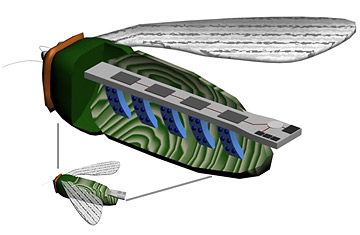The Defense Advanced Research Project Agency, that secretive band of Pentagon geeks that searches obsessively for the next big thing in the technology of warfare, is 50 years old. To celebrate, DARPA invited Vice President Dick Cheney, a former Defense Secretary well aware of the Agency’s capabilities, to help blow out the candles. “This agency brought forth the Saturn 5 rocket, surveillance satellites, the Internet, stealth technology, guided munitions, unmanned aerial vehicles, night vision and the body armor that’s in use today,” Cheney told 1,700 DARPA workers and friends who gathered at a Washington hotel to mark the occasion. “Thank heaven for DARPA.”

Created in the panicky wake of the Soviets’ launching of Sputnik, the world’s first satellite, DARPA’s mission, Cheney said, is “to make sure that America is never again caught off guard.” So, the Agency does the basic research that may be decades away from battlefield applications. It doesn’t develop new weapons, as much as it pioneers the technologies that will make tomorrow’s weapons better.
So what’s hot at DARPA right now? Bugs. The creepy, crawly flying kind. The Agency’s Microsystems Technology Office is hard at work on HI-MEMS (Hybrid Insect Micro-Electro-Mechanical System), raising real insects filled with electronic circuitry, which could be guided using GPS technology to specific targets via electrical impulses sent to their muscles. These half-bug, half-chip creations — DARPA calls them “insect cyborgs” — would be ideal for surveillance missions, the agency says in a brief description on its website.
Scientist Amit Lal and his team insert mechanical components into baby bugs during “the caterpillar and the pupae stages,” which would then allow the adult bugs to be deployed to do the Pentagon’s bidding. “The HI-MEMS program is aimed at developing tightly coupled machine-insect interfaces by placing micro-mechanical systems inside the insects during the early stages of metamorphosis,” DARPA says. “Since a majority of the tissue development in insects occurs in the later stages of metamorphosis, the renewed tissue growth around the MEMS will tend to heal, and form a reliable and stable tissue-machine interface.” Such bugs “could carry one or more sensors, such as a microphone or a gas sensor, to relay back information gathered from the target destination.”
DARPA declined TIME’s request to interview Dr. Lal about his program and the progress he is making in producing the bugs. The agency added that there is no timetable for turning backyard pests into battlefield assets. But in a written statement, spokeswoman Jan Walker said that “living, adult-stage insects have emerged with the embedded systems intact.” Presumably, enemy arsenals will soon be well-stocked with Raid.
Friday, Apr. 18, 2008
By MARK THOMPSON/WASHINGTON
Source: Time Magazine